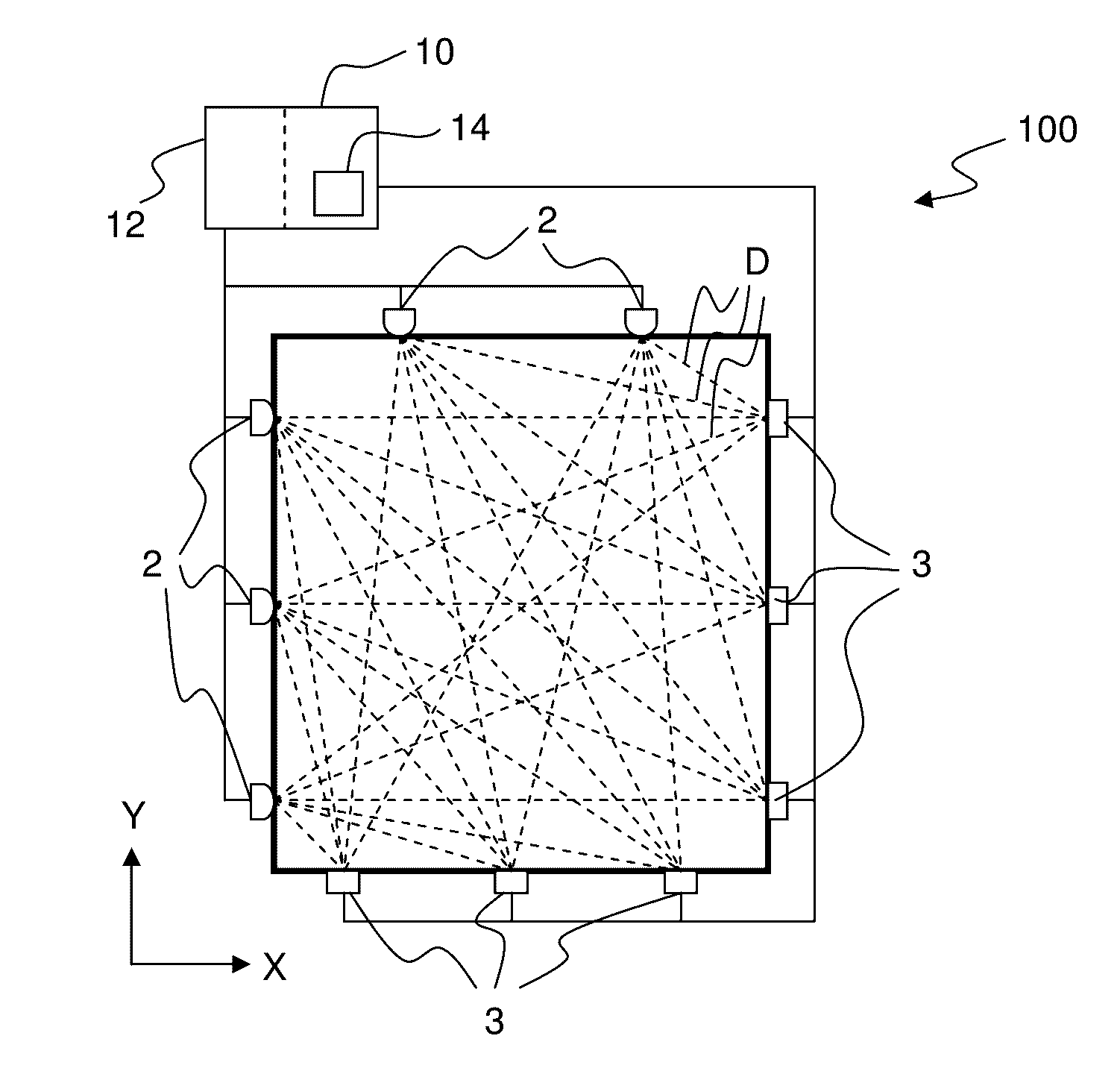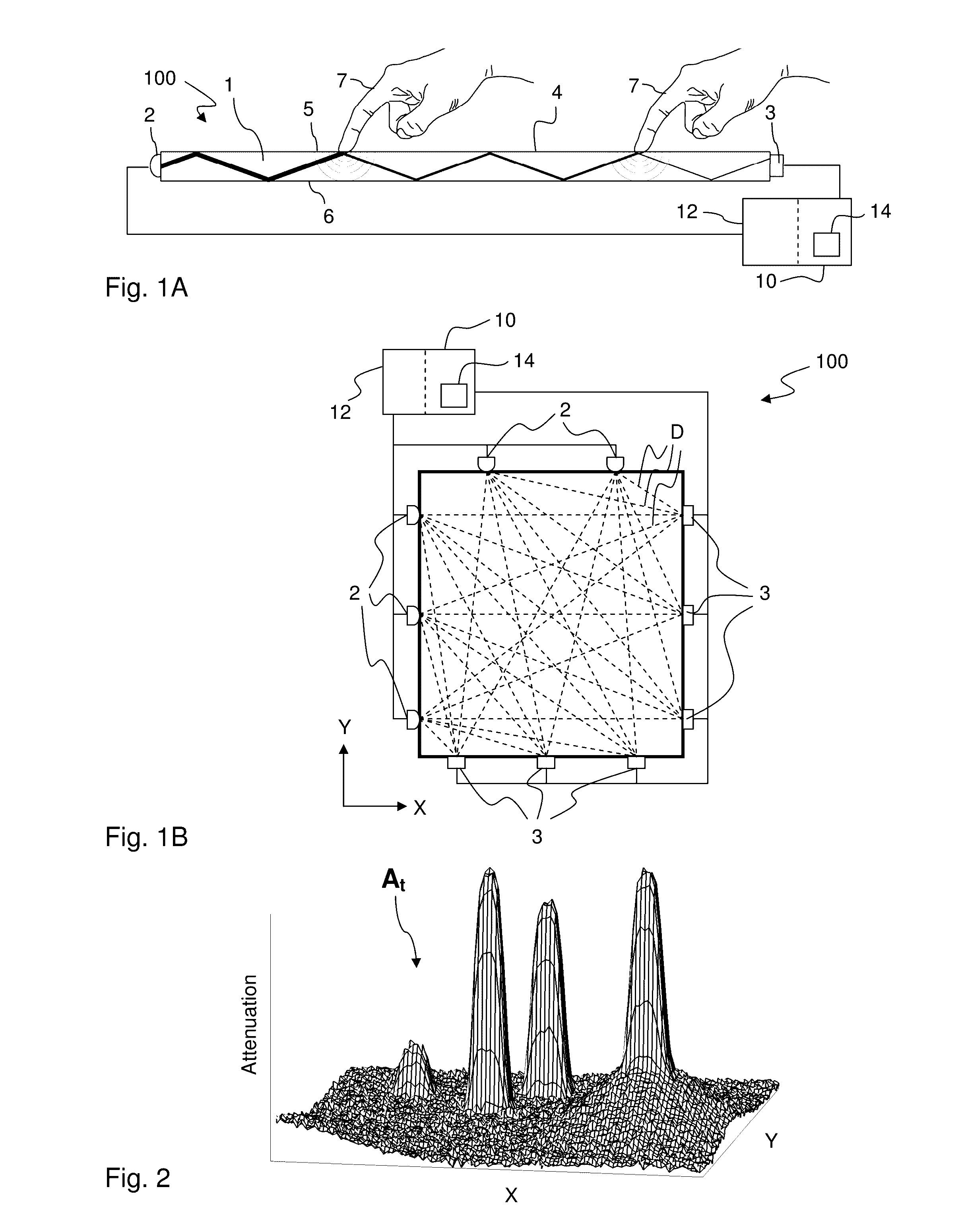Performance monitoring and correction in a touch-sensitive apparatus
a technology of performance monitoring and performance correction, applied in the direction of instruments, computing, electric digital data processing, etc., can solve the problems of particularly sensitive approaches to validity changes among data samples, artifacts in signal interaction patterns that are mistaken for touches, etc., to reduce the need to activate error correction and stabilize processing
- Summary
- Abstract
- Description
- Claims
- Application Information
AI Technical Summary
Benefits of technology
Problems solved by technology
Method used
Image
Examples
first embodiment
[0063]In a first embodiment, further discussed in WO2010 / 064983 and WO2011 / 049512, as well as WO2012 / 121652, the reference values are given by the output signal at a certain calibration time point when no touching object (finger, stylus, etc) is present on the touch surface, such as when the assembly of the apparatus 100 is finalized, at start-up, or when a user initiates a reset operation of the apparatus 100. These reference values, also denoted calibration values and represented by I0, may be stored in a memory unit of the device 10. By using I0, the reconstructed attenuation pattern At will represent the total accumulated attenuation on the touch surface since the calibration time point. Such an attenuation pattern At is illustrated in FIG. 2 as a 3D plot in the coordinate system X,Y of the touch surface (cf. FIG. 1B).
[0064]In a second embodiment, the reference values are updated repeatedly during operation of the apparatus, e.g. at time intervals Δt, by setting the reference va...
second embodiment
[0069]In a second implementation of the second embodiment, disclosed in further detail in PCT / SE2012 / 051006, filed on Sep. 24, 2012, the total attenuation pattern At is generated by accumulating the difference pattern across the time intervals Δt: At=At-Δt+dAt. In a variant of the second implementation, a total pattern, which is compensated for the influence of contaminations on the touch surface and denoted an offset pattern ot, is generated by accumulating the difference pattern across the time intervals Δt: ot=o′t-Δt+dAt. Before being used for accumulation in the next time interval, each pixel in the offset pattern ot is compensated for contamination, e.g. according to an exponential forget algorithm:
[0070]ot′=(1-ɛ)·ot{ɛ=0,iftouchinpixelofotɛ=0.1,ifnotouchinpixelofot
[0071]which will cause the offset pattern ot to gradually approach zero attenuation in regions without touch interaction, while other pixels / regions will have a value representative of the local...
PUM
 Login to View More
Login to View More Abstract
Description
Claims
Application Information
 Login to View More
Login to View More - R&D
- Intellectual Property
- Life Sciences
- Materials
- Tech Scout
- Unparalleled Data Quality
- Higher Quality Content
- 60% Fewer Hallucinations
Browse by: Latest US Patents, China's latest patents, Technical Efficacy Thesaurus, Application Domain, Technology Topic, Popular Technical Reports.
© 2025 PatSnap. All rights reserved.Legal|Privacy policy|Modern Slavery Act Transparency Statement|Sitemap|About US| Contact US: help@patsnap.com



